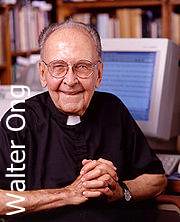Duluth, Minnesota (OpEdNews) December 25, 2024: The prolific Swiss psychiatrist and psychological theorist Carl Gustav Jung (1875-1961) lived a long and productive life. Among other things, he is famous for calling attention to the mid-life crisis.
Jung's own mid-life crisis included his dangerous self-experimentation with what he came to refer to as active imagination - a tame-sound term for the dangerous practice of deliberately evoking visual images in a trance-like state. Jung was intrigued by and with the images he evoked from his unconscious. But he worked diligently to process the imagistic material and contain it in order to safeguard himself from allowing his unconscious to overthrow his ego-consciousness and thereby throw him into a psychotic state of schizophrenia.
Yes, when the unconscious overthrows ego-consciousness, the person experiences a psychotic state.
However, the mere threat of the unconscious possibly overthrowing his ego-consciousness did not deter Jung from his dangerous self-experimentation. His ways of processing the material from his unconscious were so successful for him that he taught his early followers to use the dangerous practice of active imagination and to process the material from the unconscious that they experienced in ways like the ways that he had used so effectively.
I am happy to report that Jung's followers today no longer urge people to practice active imagination.
Disclosure:
When I was in the Jesuit order (1979-1987), I made a thirty-day directed retreat in silence (except for the daily conferences with the retreat director) following the Spiritual Exercises of St. Ignatius Loyola (1491-1556), the Spanish Renaissance mystic founder of the Jesuit order (known formally as the Society of Jesus), during my first year (of two years) in the Missouri Province's novitiate in Denver, Colorado.
During my scheduled prayer periods each day, I engaged to the best of my ability in the meditative process of imagining the scenes of the assigned scripture passages and applying my five senses to imagining the scene to the best of my ability. This form of visualization in meditation is centuries old in the Catholic tradition.
In a directed retreat, each person on retreat meets once a day with the retreat director to report what has happened during his or her prayer periods of meditation and to receive instructions for the upcoming prayer periods of meditation (e.g., new scripture passages).
My thirty-day retreat was a memorable event in my life.
Yes, this form of visualization in meditation is also dangerous. Yes, it does involve evoking in one's imagination contents involving one unconscious. For this reason, it is dangerous.
Nevertheless, I differentiate this centuries-old form of Catholic meditation from what Jung came to refer to as active imagination. The Catholic form of visualization in meditation typically involves imagining scenes from scripture. But Jung's practice of active imagination was entirely free form.
In the case of following the terse instructions of St. Ignatius Loyola in his Spiritual Exercises, I refer to this Catholic form of meditation as guided imagistic meditation. By contrast, Jung's active imagination is not guided, but is unguided - free form.
Regarding this centuries-old form of Catholic meditation, see the Canadian Jesuit biblical scholar David S. Stanley's article titled "A Suggested Approach to Lection Divina" in The American Benedictine Review (1972): pp. 439-455. Father Stanley reprinted it as an appendix in his book titled "I Encountered God!": The Spiritual Exercises with the Gospel of Saint John (1986, pp. 311-327).
Next Page 1 | 2 | 3 | 4 | 5 | 6 | 7 | 8 | 9 | 10 | 11 | 12 | 13
(Note: You can view every article as one long page if you sign up as an Advocate Member, or higher).





